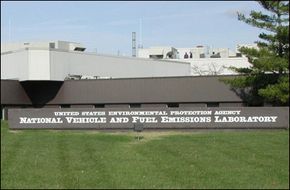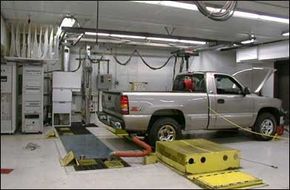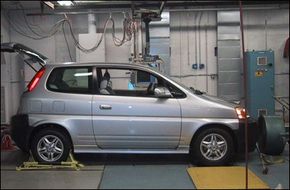With the cost of gasoline at or near $2.50 a gallon, shoppers are paying added attention to new vehicles' EPA fuel-economy ratings. For many motorists, it's become an economic necessity. Choosing a model that gets an average of 25 mpg instead of one that nets only 15 mpg can save an astute buyer as much as $1,000 per year, assuming 15,000 miles driven at $2.50 per gallon of gasoline.
Manufacturers are required by law to post their vehicles' fuel-economy ratings, as certified by the federal Environmental Protection Agency (EPA), on the window stickers of most every new vehicle sold in the U.S. -- vehicles that have gross-vehicle-weight ratings over 8,500 pounds are the exception. However, these "official" ratings rarely reflect our own real-world driving experience. Depending on what, how, and where you drive, the differences can be huge. Many consumers often complain that the EPA's numbers are substantially higher than what an average owner might expect to experience in real-world driving.
Advertisement
Why is this the case? It has a lot to do with the way new cars and trucks are evaluated for their energy consumption. While it would seem logical to determine a vehicle's fuel economy simply by filling up the tank, driving it on the road or a test track for a set number of city or highway miles, refilling the tank, and dividing the number of miles driven by the number of gallons consumed, this is not how the experts do it.
In fact, tested vehicles don't reach the pavement at all. Rather, a car or truck's fuel economy is measured under rigidly controlled circumstances in a laboratory using a standardized test that's mandated by federal law. Automakers actually do their own fuel economy testing and submit the results to the EPA, which reviews the data and confirms about 10 to 15 percent of the ratings itself at the National Vehicles and Fuel Emissions Laboratory.
In this article, we'll detail how vehicles are tested, what the difference between the EPA's fuel economy figures and real-world fuel-economy numbers are, and why the EPA's fuel-economy findings are still important. Here's a summary of what we'll cover:
- How the EPA Tests and Rates Fuel EconomyRather than take a car or truck out to a test track to measure its city and highway fuel-economy figures, the Environmental Protection Agency tests all new cars and trucks at its inside lab and never even glances at a gas gauge. In this section, we'll explain how new cars and trucks are tested by the agency, how it compiles its estimates, and why the EPA often misses the mark in listing fuel economy estimates for hybrid vehicles.
- Acutal Fuel Economy vs. the EPA's ratings It's no secret that the fuel economy numbers on your new car's window sticker rarely match up to how much gas your car uses in real life. In this section, we'll explain what daily driving factors cause these numbers to differ. We'll also tell you why the EPA's estimations are still useful in terms of learning about your vehicle, comparing your car or truck to other vehicle classes, and saving money on gas.
Advertisement


